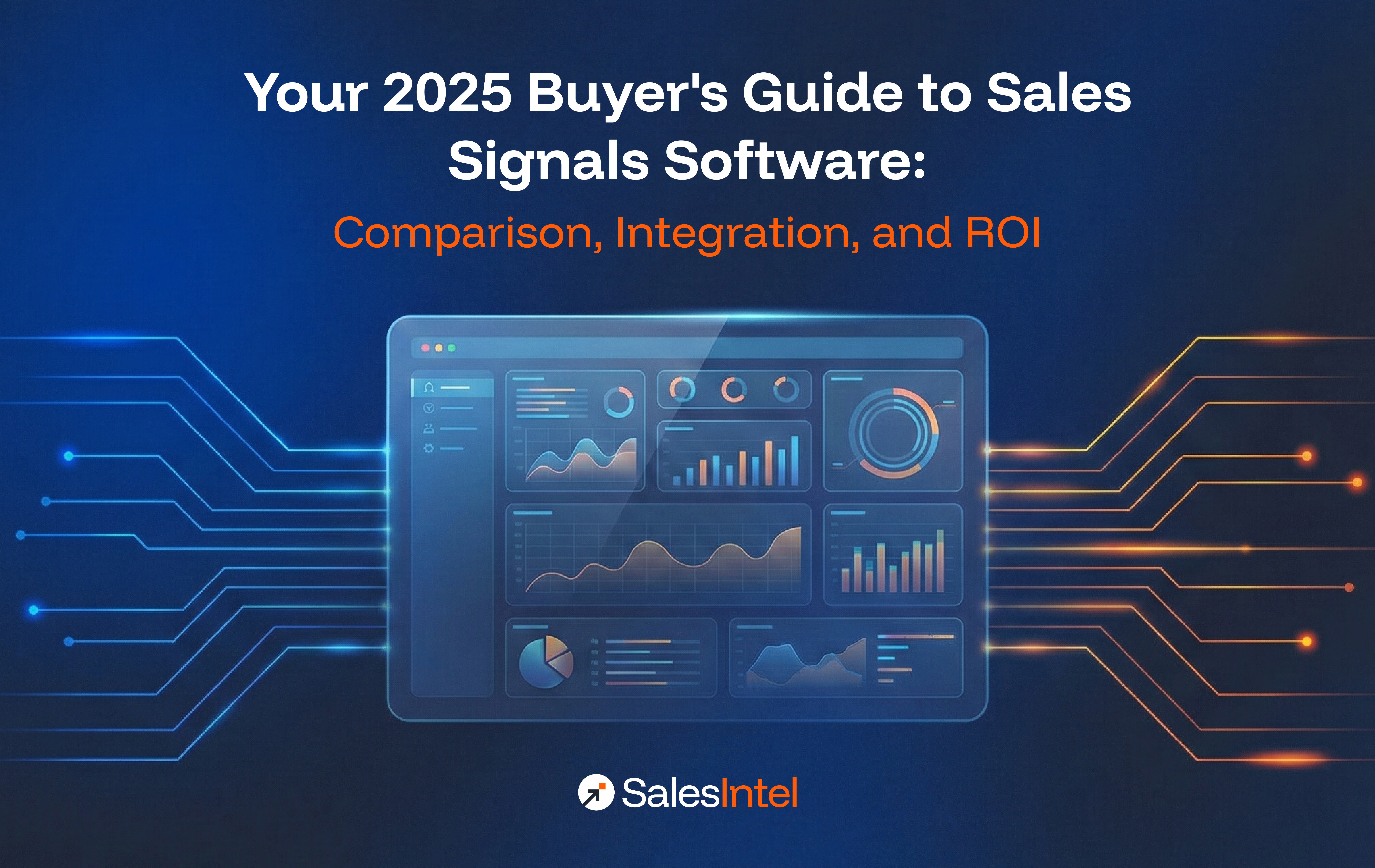Imagine this: a prospect you’ve been connecting with finally agrees to a call. But instead of being excited about your product, they seem guarded, uninterested. This scenario is all too common in B2B sales, where complex solutions and lengthy buying cycles can lead to frustrating interactions. But what if there was a way to flip the script?
The truth is, B2B sales doesn’t have to be a slog. By focusing on building trust and becoming a trusted advisor, you can create a sales experience that gets prospects genuinely interested and eager to do business with you. In the business-to-business (B2B) world, the sales experience is not just about transactions but about building long-term relationships and understanding complex needs.
This article will dig into the nuances of B2B selling, comparing it with business-to-consumer (B2C) sales, discussing its importance, addressing common challenges, and outlining strategies to enhance the sales journey.
What is B2B Selling Experience?
B2B selling experience encompasses how businesses market and sell their products or services to other businesses. Unlike B2C, B2B transactions are characterized by longer sales cycles, higher order values, and more stakeholders involved in the purchasing decision. The experience is often complex, requiring a deep understanding of the client’s business, their pain points, and how the offered solution aligns with their strategic goals.
B2B Sales Vs. B2C Sales
While both B2B and B2C sales aim to convert prospects into customers, the approach and strategies differ significantly due to their distinct audiences:
Sales Cycle: B2B sales typically have longer cycles. A report by CSO Insights noted that 74% of B2B sales to new customers take at least four months to close, with 46% taking seven months or more.
Decision-Making: B2B buying involves multiple decision-makers. According to a Gartner study, the typical buying group for a complex B2B solution involves 6 to 10 decision-makers.
Customer Relationships: In B2B sales, the emphasis is on building relationships. The stakes are higher, and purchases are often strategic investments.
Customization of Offerings: B2B products and services are often customized, while B2C products are usually standardized.
Emotional Vs. Rational Appeal: B2C marketing often leverages emotional appeal, whereas B2B marketing focuses on rational, logic-based arguments highlighting ROI and value.
Importance of an Empowering B2B Seller Experience
An empowered sales experience is crucial in B2B settings due to the complexity and strategic nature of the transactions. Empowering sales teams with the right tools and information leads to:
Enhanced Customer Engagement
When sales representatives are empowered, they possess a deeper understanding of the products and services they are selling and the industry and specific customer needs. This knowledge enables them to engage potential clients meaningfully, offering solutions tailored to their particular challenges and objectives. According to LinkedIn research, 62% of B2B buyers respond to salespersons who possess strong knowledge of the product and the needs of the business.
Streamlined Sales Process
Empowerment often includes giving sales teams access to comprehensive CRM tools, streamlined approval processes, and autonomy in decision-making. Integrating kiosk mode on sales rep devices can bolster customer engagement by providing a focused and tailored presentation environment, ensuring interactive product demos remain on-topic and highly relevant to customer needs.
The aim is to significantly reduce the length of the sales cycle and increase the efficiency of the sales process. For example, when sales reps can configure, price, and quote complex products and services quickly and accurately without multiple rounds of approvals, deals close faster, directly impacting the company’s bottom line.
Improved Problem Solving and Innovation
Empowered sales teams are likelier to think creatively and bring innovative solutions to their customers. When salespeople understand they have the support of their organization to think outside the box, they can craft bespoke solutions that significantly address the unique challenges faced by their clients. This approach helps solve the client’s problems more effectively and positions the company as a thought leader in its sector.
Higher Job Satisfaction and Lower Attrition
Empowering the sales team also leads to higher job satisfaction, which can reduce attrition rates. Sales roles, known for high burnout rates, can see improved morale when team members feel they are trusted and have the tools they need to succeed. A Salesforce report indicated that high-performing sales teams are 1.5 times more likely to base actions on a cohesive understanding of customer needs facilitated by accessible data and tools.
Increased Revenue and Profitability
Ultimately, an empowered sales team can dramatically impact the company’s bottom line. With the ability to understand and adapt to customer needs quickly, resolve issues effectively, and operate efficiently, sales teams can drive higher conversion rates. Additionally, empowered teams are better positioned to upsell and cross-sell, increasing the average deal size and directly contributing to improved profitability.
Long-Term Customer Relationships
The empowerment of sales teams contributes significantly to building and maintaining long-term customer relationships. When sales representatives are seen not just as vendors but as trusted advisors who understand and anticipate customer needs, it fosters loyalty and satisfaction among clients. This is especially important in B2B sales, where repeat business and long-term contracts are prevalent and valuable.
Challenges of the B2B Selling Process
Despite its importance, the B2B sales process faces several challenges:
Complex Decision-Making: Navigating through multiple stakeholders and aligning with various organizational goals can be daunting.
Evolving Market Demands: Staying abreast of industry trends and continuously adapting the product offering is necessary but challenging.
Integration of Sales Tools: Implementing new sales technologies can be disruptive if not managed well.
B2B Sales Examples for Creating Your Customer Journey
Effective B2B customer journeys are designed around the buyer’s needs and are continuously refined based on feedback and market changes. Here are a few examples:
Consultative Selling
Consultative selling is a technique where sales professionals position themselves as experts who help to solve their customers’ problems rather than just selling products or services. This approach is particularly effective in B2B settings where the purchasing decisions can significantly impact the customer’s business operations.
Account-Based Marketing (ABM)
Account-based marketing (ABM) is a strategy that treats each account as a market of one. It involves creating customized buying experiences based on an account’s specific attributes and needs.
There are three stages to ABM implementation:
Targeting Stage: Sales and marketing teams work together to identify key accounts and gather deep insights into these companies, including their market position, competitor analysis, and key decision-makers.
Personalized Engagement Stage: Marketing campaigns are tailored to address the specific needs and pain points of each account, often using personalized emails, targeted content, and bespoke web experiences.
Closing Stage: Sales teams use the insights from tailored marketing efforts to speak directly to the business’s needs, offering customized solutions and closing deals more effectively.
Solution Selling
Solution selling focuses on the customer’s pain points and develops a solution that explicitly addresses those issues. This strategy is effective in complex sales environments where customers seek reliability and expertise.
Value Selling
Value selling emphasizes communicating the value of a product or service in terms of its contribution to the customer’s business success, focusing on benefits like increased efficiency, cost savings, and return on investment.
Strategic Partnerships
Building strategic partnerships involves creating relationships with other companies whose products or services complement your own, offering combined solutions that better meet the complex needs of B2B customers.
Creating a Successful B2B Selling Experience
Crafting a successful B2B selling experience is crucial for businesses aiming to thrive in the competitive market of selling to other businesses. This involves a multifaceted approach that caters to the unique aspects of B2B transactions, including longer sales cycles, higher stakes, and more complex decision-making processes.
Deep Understanding of Customer Needs: A profound understanding of what the customer needs is at the core of any successful B2B selling strategy. This understanding goes beyond the superficial level of knowing what a business does or what industry it operates in.
Alignment with Customer Business Goals: B2B sales success largely depends on how well a company’s offerings align with the strategic goals of its customers. This alignment reassures customers that they are making a wise investment, which is crucial in securing long-term business relationships.
Building Strong Relationships: In B2B sales, relationships often determine the success of a transaction. Building trust and maintaining strong relationships can lead to repeat business and referrals, which are invaluable.
Leveraging Technology: Technology plays a crucial role in enhancing the efficiency and effectiveness of the B2B selling process. From CRM systems to AI-driven analytics, technology can provide a competitive edge.
Continuous Feedback and Improvement: The B2B selling landscape constantly evolves, driven by technological changes, market conditions, and customer expectations. Continuous improvement is essential to keep up with these changes and ensure the selling experience remains effective.
Tools to Improve B2B Selling Experience
Various SaaS tools help streamline and enhance the B2B selling experience. Here are some of the prime categories and their examples.
Customer Relationship Management (CRM) Systems
CRM systems are at the heart of modern B2B sales strategies. They help manage and analyze customer interactions and data throughout the customer lifecycle, intending to improve customer relationships and drive sales growth.
Examples: Salesforce, HubSpot, Microsoft Dynamics 365
Data Analytics Tools
Data analytics tools help sales teams make informed decisions by analyzing large volumes of data to identify trends, forecast sales, and optimize strategies.
Examples: Tableau, Google Analytics, Power BI by Microsoft
Communication Tools
Effective communication is vital in B2B sales to ensure all stakeholders are aligned. Tools facilitating smooth communication can significantly enhance sales by improving collaboration and response times.
Examples: Slack, Zoom, Microsoft Teams
Sales Automation Tools
Sales automation tools streamline various aspects of the sales process, from lead generation to closing deals, allowing sales teams to focus more on selling and less on administrative tasks.
Examples: Pipedrive, Outreach, Autopilot
Sales Enablement Platforms
These platforms provide sales teams with the necessary resources, content, and information to sell more effectively. They ensure that all team members have what they need to engage with clients effectively at every sales cycle stage.
Examples: Seismic, Highspot, Showpad
Final Words
Creating a successful B2B sales experience requires a strategic approach focusing on understanding complex buyer needs, nurturing relationships, and leveraging technology to enhance interactions and service delivery. By focusing on these areas, businesses can develop a robust B2B sales strategy that meets and exceeds customer expectations, fostering immediate success and long-term loyalty.
Author Bio: In a world full of content ninjas, wordsmiths, and whatnot, Abhinandan likes to KISS (keep it simple, stupid) and write about what’s setting the enterprise mobility world abuzz.




